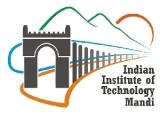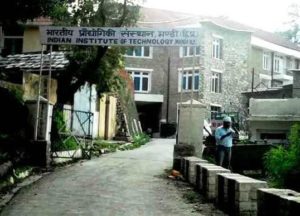Are India’s ‘IIT’ brand of technology institutes being downgraded into ‘fly by night’ franchises?
Jayesh Gupta, a graduate from the Indian Institute of Technology at Mandi says the ‘premier’ institute had no workshop facilities of its own. “During my first two years at Mandi, we had to travel to other regional colleges to access mechanical workshop facilities.”
Citing bad conditions at such premier institutes, IIT- Kharagpur student Digvijay Patil launched a petition last year. The petition pleaded government to stop opening new IITs (Indian Institutes of technology). “You cannot have an IIT where students have to travel to other colleges to use a lab,” he says. The petition was forwarded to union HRD minister Smriti Irani but it received no response.
On one hand government is planning for one IIT in every state. On other some IITs are finding it difficult to afford even own laboratories and teachers for their students.
This is the situation prevailing in most of the 11 new IITs. These new IITs came up in 2008 and onwards. Some of them have no own campuses or hostels. Students have to shuffle from temporary classrooms to borrowed labs. Because of shortage of teachers, students manage through video lectures beamed live from other IITs. Against an overall sanctioned faculty of 6,076 across 16 IITs, there is a shortfall of 2,608-nearly 43%.
IIT-Patna, one of the eight new IITs, operates from its temporary campus at Industrial Estate. Since the college is by the road side, the campus along with laboratories often faces water logging in rainy season. To pass through waterlogged campus, sometimes students have to board vehicles from hostel to reach academy. By July 2015, IIT-Patna will shift to its permanent campus at Bihta.
“Expanding the number of IITs without ensuring adequate faculty and research infrastructure in the new institutions presents a significant risk to both the quality of the graduating students and the global brand of IITs,” says Soumitra Dutta, an IIT-Delhi alumnus.
Digvijay Patil mentions that the intent should be to improve the existing IITs. It should expand with an eye on a culture of excellence. “IITs should not be thought of merely as teaching shops, since that objective is fulfilled by thousands of engineering colleges across the country. Mass opening of IITs is not desirable,” says former IIT-Ropar director MK Surappa.
Some consider the shadow of political factors behind the rush for new IITs. “Every party wants to build its political image by setting up IITs. But at what cost?” says Anand Kumar, a mathematician and founder of the renowned Super 30 IIT coaching institute. “Opening so many IITs has diluted the reputation of these institutes. What is the point of increasing the number of IITs when most do not offer the same quality?”
Analysing the current situation, former IIT-Delhi director RK Shevgaonkar says, “A time will come when people will not go by an overall IIT tag but will want to know which IIT an individual has attended.”
So what should be the solution? Most academicians agree with the opinion of encouraging research work. More and better research will produce more teachers (since the basic qualification for an IIT teaching position is a PhD). It will lead in turn to students who are more inspired to take up research.
Nuclear scientist Anil Kakodkar says, “I would say that the movement has been in the right direction but at times the growth has been too fast. The way forward would be to enhance the PhD-level research at the IITs. Each faculty member should train four or five good research scholars and groom them as prospective faculty. That will determine the rate at which we can grow.”
[By- intern Ravi Ranjan Kumar based on media inputs]

